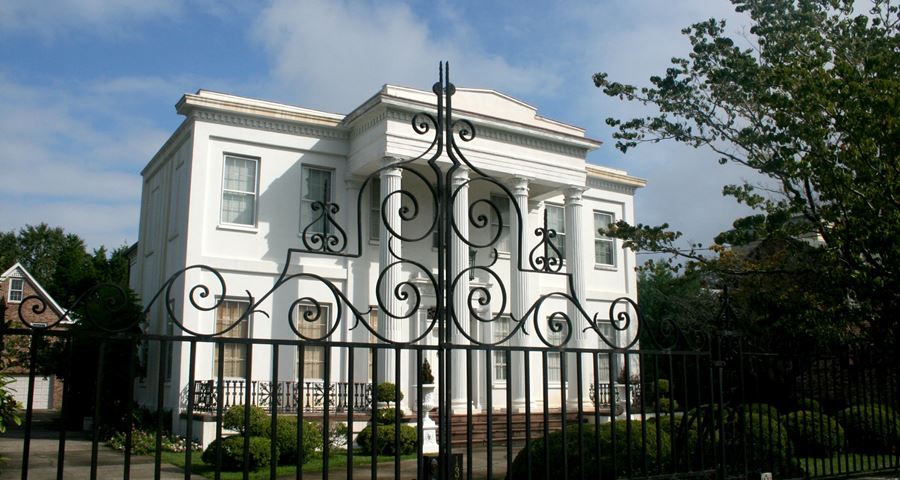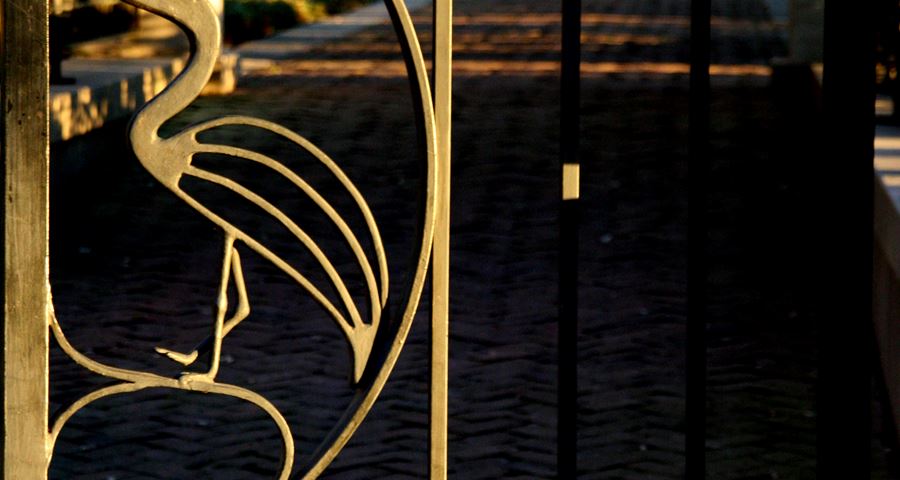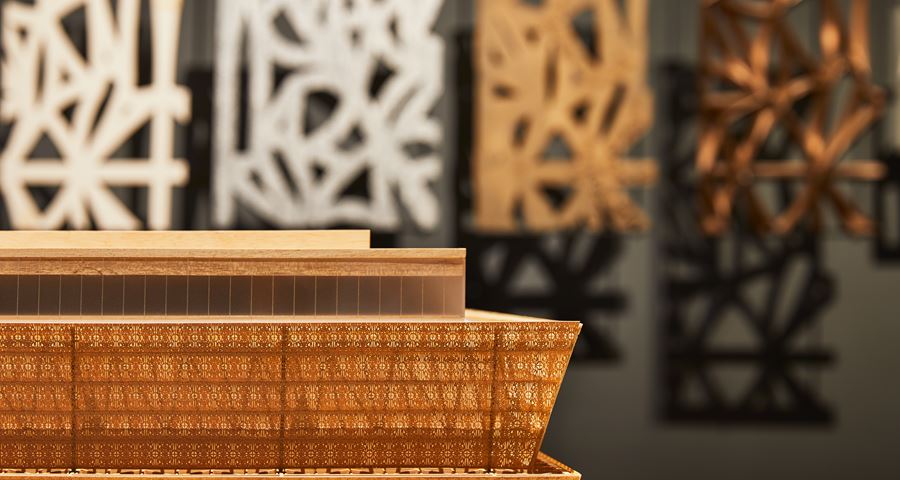Blog feature by Rossie M.Colter David Adjaye: Making Memory
PHILIP SIMMONS, Master Blacksmith (1912 – 2009)
Designed by Sir David Adjaye OBE, the Smithsonian Museum of African American History and Culture is dedicated to telling the story of black American’s lives, from slavery to the present day. The very architecture of the building is itself a monument to the stories told inside. For example, the building’s bronze-coloured façade panels honour the contribution of African American slaves to the ornate ironwork common in the US during the height of the antebellum south in the early 1800s. Although not attributed to them until the 1970s, the majority of ironwork in cities like New Orleans and Charleston was designed and produced by black slaves who had developed significant metallurgical skills before slavery.
Below, Rossie M. Colter introduces the work of African American artisan and blacksmith Philip Simmons – a master blacksmith who worked prolifically in Charleston from the early 20th century until his death in 2009. Simmons’ work has been recognised by some of the highest accolades for craftspeople in the US; one of his wrought iron gates is celebrated in the collections of the Smithsonian NMAAHC.
-
Introduction by Maria McLintock, curatorial assistant, Design Museum.
Reading time: 5 minutes.

Heart Gate: Philip Simmons Memorial Garden Charleston, SC
Born on Daniel Island, which is about five miles across the Cooper River from Charleston, was where Philip Simmons lived with his grandparents on one of the seven farms that encompassed the island. His mother lived and worked in Charleston and traveled back and forth on weekends via ferry because there were no bridges at the time.
When Philip turned eight, a new school for black children opened in the neighborhood where his mother lived in Charleston (Buist Elementary School) and Philip could walk there safely. The reason his grandmother sent him to Charleston was for a better education. If he had stayed on the Daniel Island, he would have been subject to being taken out of class when there was a crop to harvest – therefore, reducing his time in school.
The route he took to Buist had him passing the blacksmith shop of Peter Simmons (no relation), who was an ex-slave. The sounds of the hammer striking the anvil was exciting to him. Plus the sounds from the horses while getting new shoes sparked the little boy’s imagination so much that he wanted to be a part of the action that was going on inside the shop.
One day on his way home from school he got his nerves up to go into the shop and ask the owner for a job. The owner asked his age and he told him that he was eight years old. Peter, the owner, told him to come back when he was 13. In those days, a person could be hired part time at 13 and full-time at 15. So, the day after his 13th birthday, Philip Simmons joined the blacksmith staff as an apprentice. When he became 15, he went from part-time to a full-time employee.

138 Wentworth Street: Gates Villa de la Fontaine Charleston SC
Philip loved everything about the blacksmith shop. He walked around town looking at the older iron fences and gates. He was also smart! Charleston, before the 1950s, like many towns in the south, didn’t have the grocery stores that we see today. Vendors carried their wares around town by horse and wagon. They would drive down streets and call out what they were selling on their wagon. People would come out of their houses to purchase what was being sold – vegetables, poultry, seafood, grains and ice.
One afternoon when Philip was in the blacksmith shop alone, the “ice man” ran in frantic about his broken icepick. Philip looked around the shop and saw an old broom handle. He broke it off and chiseled a small round piece of iron to make a sharp point on one end. He shoved the other end into the broom handle to make an icepick. The vendor paid him and went away satisfied because he could complete his route without losing his ice that was melting on the wagon. When Peter returned to the shop, Philip gave him the money from the iceman. Peter, in turn, gave half of it to Philip – they became partners.
The Blacksmith Shop of Peter Simmons was basically producing functioning items and providing maintenance because they had a welding machine and could forge metal pieces. They were making hardware for doors and “shutter dogs” for the wooden shutters on windows, whether open or shut on the older houses. As some of the ironworks around Charleston corroded, Philip got a chance to develop his craft by repairing, replacing and restoring pieces.
Meanwhile, Philip married, had three children and his wife died shortly after the third child was born. His mentor, Peter, decided to retire and move back to his family home in Mt. Pleasant where he had a small blacksmith shop. He gave Philip his business in Charleston. Peter died at the age of 98 in 1952.

Egret Gate: Gate at Riley Waterfront Park Charleston, SC
Philip Simmons was so good at the replacement of the corroded iron, he was able to practice and develop his skills. One of his customers, Jack Krawcheck, a merchant on King Street, asked him to make a driveway gate. Automobiles were becoming more popular and Jack was concerned about his children’s safety. With the encouragement from Jack Krawcheck, Philip made his first gate in1948 that still stands.
Young Simmons developed the skill of replacing pieces of iron in the older gates so that they appeared to be original to the gate. As an example, he replaced 14 leaves in a 400-year-old gate that even a trained eye could not detect the difference. Customers also came to him, usually by word of mouth, to replace wooden gates with iron.
In 1976, Mr. Simmons was invited to participate in the Heritage Festival sponsored by the Smithsonian Institution in Washington, DC. He had designed “The Star and Fish Gate” for the occasion and began forging it on the grounds. With the Festival lasting only two weeks it was not enough time to complete the gate. After returning to the Festival in 1978 and 1982, the gate was purchased by the American History Museum at the Smithsonian to include in their inventory.
Philip Simmons used nature (egrets, snakes, fish, leaves and trees) in his designs and also included harps and hearts to share his love for the music and the community. His work can be seen on most streets in Charleston as they grace the properties as gates, fences, step and porch railings, and window grills. There are also stand-alone pieces that are considered sculpture, such as a gazebo at the airport, a welcome gate at the Charleston Visitor Center; the entrance gates to the Matthew J. Perry Federal Courthouse and a large piece in the State Museum in Columbia, SC. On Daniel Island, where he was born, the municipal park is called Philip Simmons Park where he designed the ironwork at the park and forged the letters that spell Daniel Island. He also designed the LOGO for the Island that is replicated at the top of the middle section of the fence. Daniel Island is now a brand new town.

Smithsonian National Museum of African American History and Culture
The National Museum of African American History and Culture at the Smithsonian has a display that includes tools from when Peter Simmons worked in the shop, a gate designed and forged by Philip Simmons, and a contemporary piece designed and forged by his nephew, Carlton Simmons. According to David Adjave, the outside tiers of the building were influenced by Mr. Simmons.
Philip Simmons was always a gentle spoken person who loved children. He provided wisdom to them without scolding, and was respected by everyone who met him.
As a tribute to the man and as a member of St. John’s Reformed Episcopal Church in Charleston, the Philip Simmons Foundation, Inc., was established in 1991 with the mission to develop and maintain the grounds of the church as a landscaped garden. The gates and fence were designed by Mr. Simmons and constructed at his shop. The driveway gate (HEART GATE) opens into a topiary garden with plants designed by Pearl Fryar of Bishopville, SC.
There are four schools named for Philip Simmons: Simmons-Pinckney Middle School in Charleston, and the Elementary, Middle, and High schools outside of Daniel Island.
For more information about Philip Simmons and the Foundation you may visit www.philipsimmons.us. When in Charleston, SC, you are welcome to visit the Philip Simmons Museum Home and Workshop at 30 1/2 Blake Street for a tour and demonstration of how the many pieces of ironwork were forged during his career of 83 years.
Submitted by:
Rossie M. Colter, Project Administrator, Philip Simmons Foundation, Inc.
Photographs by Steve Lepre of Sunhead Projects, LLC.
Related exhibition
Background image | Daniel Island, LOGO